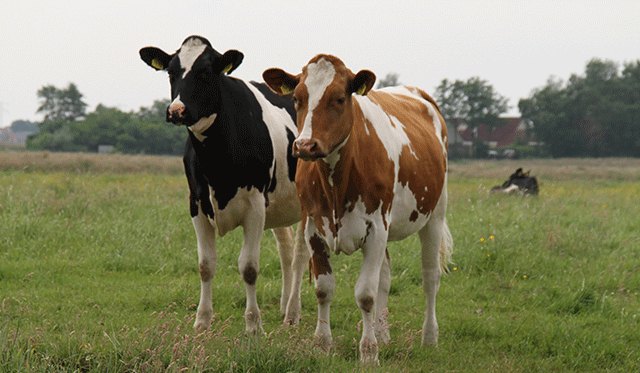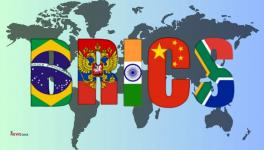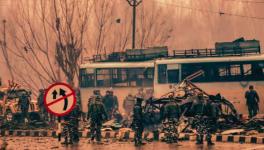Dutch Vet Explains Europe Farmers' Crisis

Holstein Friesian Dairy cattle. Image credit: Firma Schaap
Katrien vant Hooft, a veterinarian in the Netherlands made an online presentation on Monday, August 22, 2022, to explain to pastoralists from across the world the distress faced by farmers in the Netherlands, and the lessons that could be learnt from the Dutch experience. In her remarks in conclusion, she urged farmers to look to India for sustainable farming, though she left unsaid problems with farming in India.
The online meeting was part of a series of meetings in the build-up to 2026, the UN International Year of Rangelands and Pastoralists. Katrien vant Hooft explained that Dutch farmers had exceeded “planetary boundaries” – a term coined by climate scientist Johan Rockstrom and colleagues who charted changes to climate, oceans and the stratospheric ozone layer, besides biodiversity, levels of nitrogen and phosphorus, land systems, and water to map levels where these became unsustainable.
Veterinarian vant Hooft explained that Dutch farming was long celebrated for its high productivity; it was producing over 14 billion litres of milk annually, and exporting much of its produce internationally. Yet, farmers are now out in the streets in tractors, protesting.
Seventy years ago, she said, agriculture in the Netherlands was low in inputs and labour intensive – animals were milked by hand; cows were of the local breed (the black-and-white Friesian cows). In the 1960s, after the formation of the European Economic Community in 1957, of which the Netherlands was a founding member, policies changed.
Milk was earlier collected daily, and stored in cans. This changed; each farm was mandated to have a large tank and collection from the farmers was no longer daily. This meant that farmers were forced to scale up, and become more specialised – those having dairy farms then did not grow crops. Stables became large, and the place to collect the dung and urine was beneath the floor of the stables.
Earlier, in the summer, animals would be left free to graze on the lands and penned in stables only during winter. That changed, once policy favoured larger farms, offering subsidies and government benefits for higher scale and mechanised production.
Milk production more than doubled from the 1960s, although the number of farms shrank drastically, from over 1,80,000 in the 1960s to about 15,000 by 2020. The Netherlands became a land of “milk lakes” and “butter mountains”, the world’s biggest exporter of milk products.
Katrien vant Hooft explained that a new breed of cows was introduced for higher milk productivity – the Holstein-Friesian. This required a concentrated feed for giving more milk, and more maize was used in fodder. Cows were no longer producing milk after feeding on grass. The manure was more liquid, with the change in the stomach of the animals – the earlier dry manure produced less ammonia and nitrogen. The large manure tanks at the farms were blamed for the high nitrogen emissions.
Although each of the animals produced much more milk than earlier – averaging about 33 litres per cow – the life span of the cows was shorter, and the farmers could only get a little less than three lactations, on average, from each cow. The liquid manure was no longer used in the fields, and crops were produced with chemical fertilisers – there was more nitrogen in the air, and loss of insects and a shrinkage in biodiversity. The resultant loss of bird diversity too affected the farms.
Soy fodder is currently shipped in from South America for use in dairy, pig and chicken farms. The product is then mostly exported. What that causes is also a big concentration of manure in the Netherlands, which became, according to the vet, a “manure heap” – the fodder and final produce were both exported, while the manure remained.
With the shrinkage in the number of farms and the increase in the size of each of the farms, mechanisation and higher and higher investment in technology was made, aided by government subsidy and support for scaling up. The Netherlands is also a highly regulated market, and the cycle of scale enlargement could not be sustained. Over time, as farming inputs became more expensive and incomes less stable, younger people have shown reluctance to take over large farms. Those farmers that remain choose either to migrate to Canada or other nations less strictly regulated or to diversify their sources of income.
Meanwhile, the European Union has also adopted stricter norms on emissions, and environmental groups have taken to litigation in the Netherlands, winning cases that made emission reduction mandatory. In 2021, the government announced that it would set a target of a 50% reduction in nitrogen emission by 2030, without clearly laying down a roadmap for achieving this goal or taking the farmers into confidence before making the announcement.
The veterinarian explained that many farmers see the need for reduced greenhouse gas emissions and are willing to alter their practices to achieve it, but wish for the government to lay down a clear strategy to follow. Farmers seek assurance that their incomes will not be drastically affected. Lesser emissions will require less cows on each farm – currently, the average farm has about 108 cows. To reduce emissions, lower input farming and protection of soil fertility should all be planned. Old forms of farming, with local breeds and diversification of income strategies, must all be brought back. However, farmers have been socialised into intensification and higher-scale operations. Government support and credit opportunities too are limited for those who operate small farms, and only 3% of farms in the country are organic.
Choosing more sustainable farming would mean reduced exports and higher prices for local consumers. For more sustainable agriculture and animal rearing, Katrien vant Hooft said, farmers across the world could look to India.
Why Indian farming is far from ideal
Despite vant Hooft’s optimistic assessment of farming in India, it is well known that the largest number of undernourished people in the world live in this country. The UN’s “State of Food Insecurity in the World” report, 2015 recorded that over 19 crore of India’s population was undernourished. India has the world’s largest Public Distribution System, providing free food grains to the poorest; even so, children from even two-fifths of the privileged non-poor households are stunted.
Farming is not remunerative in India, with agriculture, as of 2019-20, contributing only 17% to the national income while employing about 55% of India’s workforce. The proportion of landless labourers engaged in agriculture has also risen, from 28% in 1951 to 55% in 2011.
Small livestock breeders in India could be the alternative to look at
In the livestock sector, however, there is remarkable resilience visible in the operations of small livestock breeders – India is the world’s largest milk producer, and 22% of the world’s total milk production happens in India. The small shepherds and herders also operate with low inputs, keeping their animals mobile. This pastoral nomadism, however, does not feature in government policy making, and the nearly 46 different communities of livestock breeders in India, estimated to be about 10% of India’s total population, have not been the subject of any policy incentives. Despite that, and despite the shrinkage of community grazing lands and the thrust towards settling these nomadic communities, such livestock breeding continues and pastoralists are responsible for over half of India’s total milk production. As Europe looks to other models of sustainable livestock breeding, the high productivity and low-input breeding by Indian pastoralists could be a model worth examining.
Get the latest reports & analysis with people's perspective on Protests, movements & deep analytical videos, discussions of the current affairs in your Telegram app. Subscribe to NewsClick's Telegram channel & get Real-Time updates on stories, as they get published on our website.
























